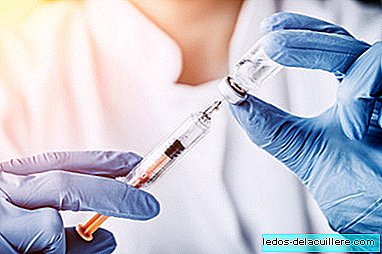
According to data from the AEP Vaccine Advisory Committee, our country has excellent vaccine coverage, placing the primary vaccination rate (the vaccines that the baby receives in its first year of life) above 97 percent.
But nevertheless, these coverages vary if we look at booster vaccination (vaccines administered at 2 years, 4-6 years and 12-14 years), and also depending on the autonomous community. We analyze the statistical data published by the Ministry of Health.
Vaccination rates by Autonomous Communities and age groups
In 2017, the Ministry of Health published a report with the vaccine coverage of each autonomous community, analyzing one by one all the mandatory vaccines in the official calendar.
The data collected are from 2016 (with the exception of Aragon and the Balearic Islands, whose last figures correspond to 2014) and as we will see below, there are substantial differences in the vaccination rate both in terms of the vaccine, as well as by the autonomous community and the moment they were administered, because in booster doses the vaccination rate falls with respect to the primary vaccination.
 Official calendar of vaccines 2018, of the AEP
Official calendar of vaccines 2018, of the AEP Coverages above 97 percent in primary vaccination
With regard to primary vaccination, that is, the vaccines the baby receives in its first twelve months of life, the average vaccination coverage in Spain stands at 97.2 percent for vaccines against Poliomyelitis, Influenzae type B, Hepatitis B and DTPa (diphtheria, tetanus and pertussis), and 98 percent for the vaccine against Menigitis C.
WHO considers coverage above 95 percent adequate or efficient, so the data provided by the Ministry of Health are excellent.However, these total coverage vary depending on the autonomous community analyzed, with Catalonia having the lowest rate for most vaccines (94 percent) followed by the Basque Country, Melilla and Castilla y León.
On the contrary, the autonomous communities with best primovaccination rate are Madrid, Valencian Community and Ceuta, whose rates are above 99 percent, reaching 100 in the meningitis C vaccine.
Booster dose between 1-2 years
If we analyze the vaccine rates of the booster doses of the second year, we find that In general, coverage continues to be very high, standing between 95.4 and 96.2 percent.
On this occasion, the Autonomous Communities with the worst rate are Extremadura, with coverage above 87 percent except in the case of the vaccine against meningitis C, Melilla and the Basque Country, with 92.2 percent, and Castilla y León, Canarias, Cataluña and Murcia, with a coverage of approximately 93 percent.
The best vaccine coverage is reached by Ceuta, Galicia and Madrid.
Booster dose between 4-6 years
According to the official vaccine schedule, booster doses of DTP / DTPa vaccines are re-administered between four and six years, but this time Vaccine coverage nationwide reached a notable setback in 2016, due to supply problems that led to a postponement of the vaccination of the cohorts of 2009 and especially of 2010.
According to the AEP, in 2017, the Autonomous Communities began to recover the pending vaccination in these children
Booster dose and vaccines between 14-16 years
The coverage of the Td (14-16 years) and meningococcal C (12 years) and Human Papillomavirus (HPV) vaccines they are not optimal in numerous communities, whose vaccination rate falls below 80%.

The communities with the worst rate for adolescent reinforcement of the diphtheria and tetanus (Td) vaccine are Melilla, Ceuta, Murcia, Extremadura, Valencian Community and the Canary Islands, whose coverage does not reach 80 percent. These figures vary in the case of the meningitis C vaccine, since the coverage rises slightly.
On the other hand, the communities of La Rioja, Navarra and Catalonia, with coverage above 90 percent in this age group, are the best located in the ranking of statistics of the Ministry of Health.
Refering to vaccine against human papillomavirus, national coverage does not reach 80 percent yet; and even in 2016, with a rate of 77.6 percent, a setback is observed with respect to the previous year, in which the coverage reached 79 percent.
Spain, measles free country
Last year, Spain got the approval of measles-free country, a remarkable fact amid the measles epidemic that ravages several European countries.
If you look at this particular vaccine, the triple viral continues to have a wide national coverage in your first dose, Ceuta, Navarra and Madrid being the communities with the best rates, exceeding 90 percent. However, the percentage falls below this figure in the second dose in the communities of Valencia, Extremadura, Murcia and Melilla.
The importance of completing vaccination
As we have just seen, the vaccination rates in primary vaccination, as well as the booster doses of the first and second year of life are very high. However, there are communities where they are encrypted fall, and as children grow, the vaccine coverage also decreases.
Therefore, once again we highlight the importance of completing the entire vaccine schedule to be properly protected, as well as receiving other vaccines that must be administered by the official calendar later.Photos | iStock












